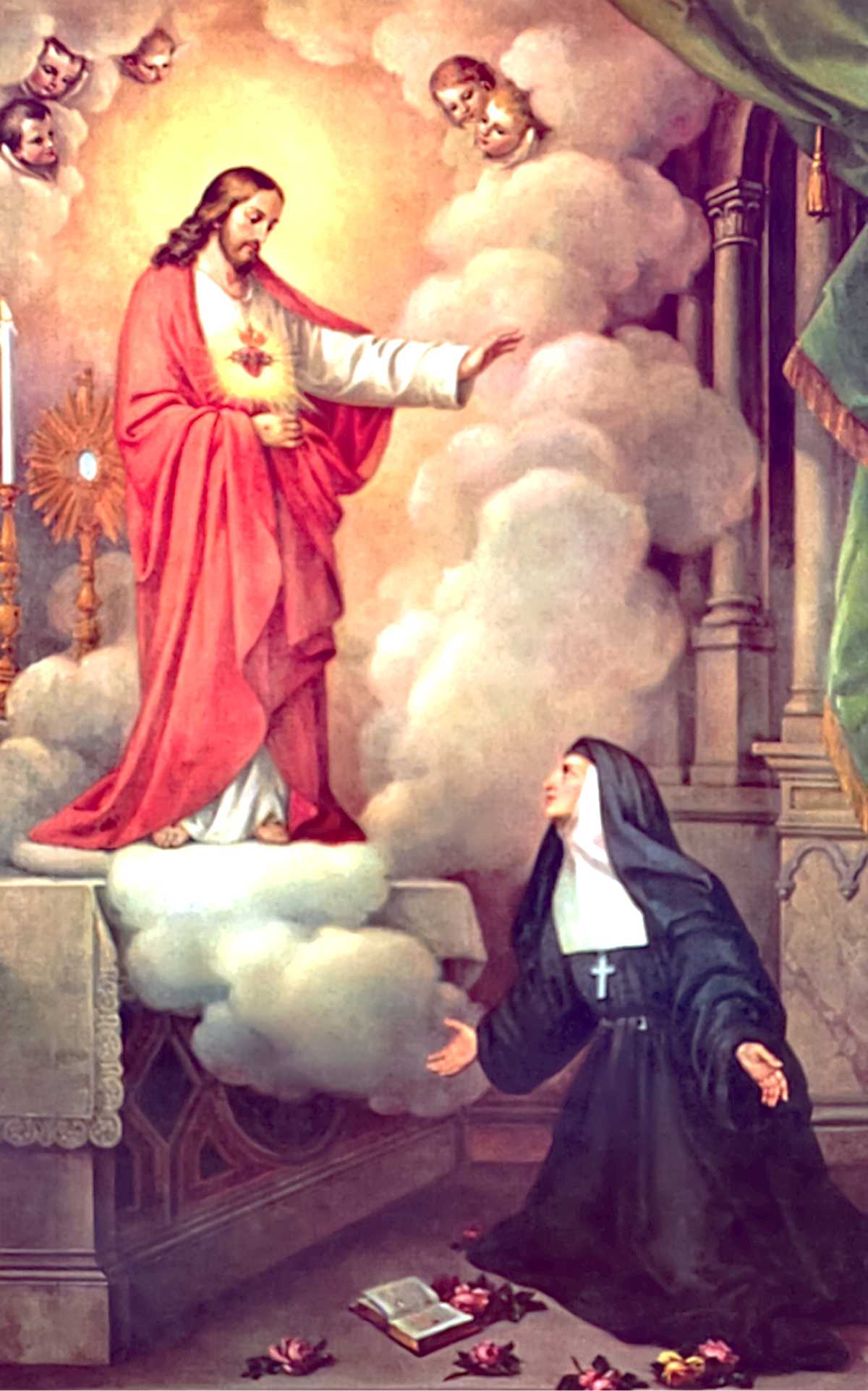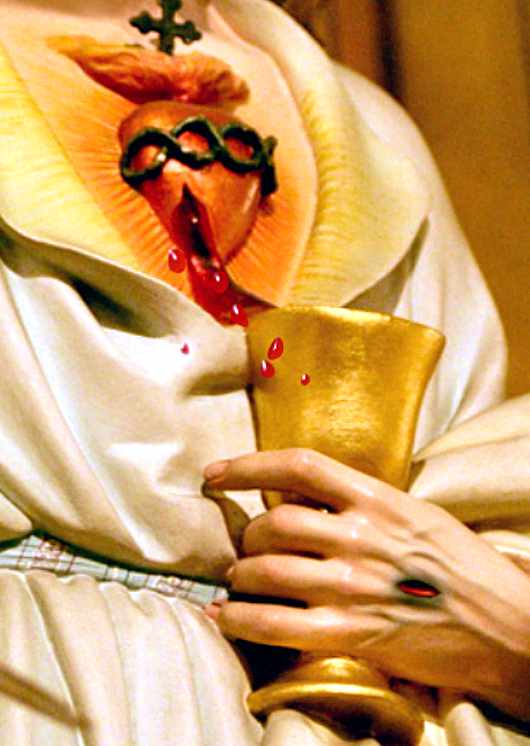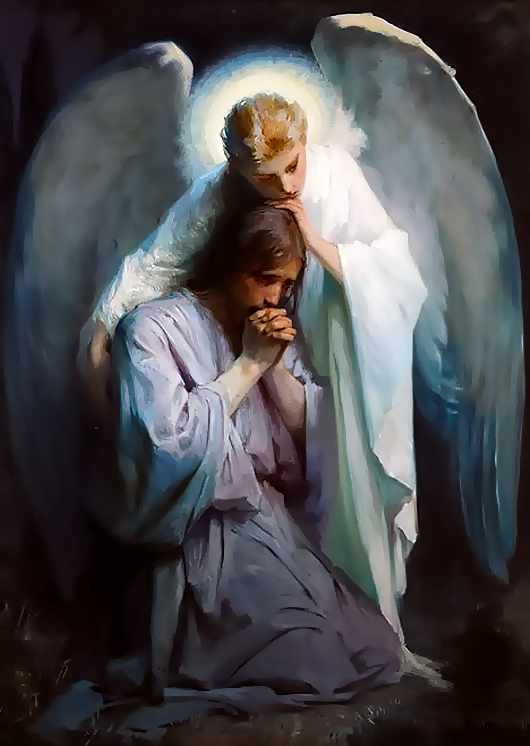The Revelations to Saint Margarete Mary Alacoque
1673-1675, Paray-le-Monial, France

Behold the Heart which has so loved men that it has spared nothing, even to exhausting and consuming Itself, in order to testify Its love.
(Revelation of the Sacred Heart to St. Margaret Mary, June 1675)
A Vocation for Suffering
St. Margaret Mary Alacoque (french: St. Marguerite-Marie) was born on 22 July 1647 at Lauthecourt in Burgundy (France) into a wealthy and religious family.
Hers was an early vocation. In her memoirs, the saint says that already as a child God made her see “the great ugliness of sin, which caused me so much horror that the slightest fault was for me an unbearable torment.” To this was added a great hunger for prayer and penance, allied to a great compassion for the needy and a desire to help them.
As her father died early, her mother Filiberte gave little Margaret Mary to a convent of Poor Clares. Strolling in the silence of the cloister and observing the modesty and spirit of prayer of the sisters, she felt the call to religious life. At age nine she received her First Communion, and her hunger for prayer and recollection increased significantly.
However, falling seriously ill, she had to return to her mother’s home, where a difficult period of trials began. Disease struck her for four years, preventing her from walking. After making a promise to the Blessed Mother, she regained her health but her suffering only changed form. Her mother entrusted her to a cousin who managed the family patrimony, and she had to submit herself to this unsociable and insensitive relative who denied her even basic necessities.
God permitted this to familiarise her with renunciation and prepare her to embrace the vocation of atonement He was to offer years later. Accepted with exemplary patience, her early sufferings strengthened her on the way of holiness. In fact, the art of becoming holy is precisely in being able to reach the ultimate goal of life by travelling the long and bitter path of suffering.
Already in this period, the saint received extraordinary mystical graces. She had a familiar relationship with Jesus accompanied by visions: “The Saviour was always present under the figure of the Crucified or the Ecce Homo, carrying His Cross; this image inspired in me so much compassion and love of suffering, that all His sufferings seemed lighter when compared them with the desire I felt to suffer in order to conform to my suffering Jesus.” Later she will say, “God has given me so much love for the Cross that I cannot live a moment without suffering; but suffering in silence, without consolation, relief or compassion; and dying with this Lord of my soul, under the weight of all kinds of insults, humiliations, oblivion and contempt.”
Her innocence must not lead us to think that Margaret Mary was perfect from the very beginning, let alone that she was a giddy and dumb doll as portrayed sometimes in sugary and inaccurate biographies. Instead, contemporary eye witnesses recount a lively and sharp girl given to entertainment, attracted by life in society and sought out by young men as a good potential bride. In short, she was a girl of her time and environment with her flaws but also with a secret desire growing inside, and a determination to attain it because Providence had chosen her for a special mission.
Seeing her penchant for religious life, the family decided to entrust her to an Ursuline convent in which a maternal cousin to whom she was very close was living. But Margaret Mary refused, giving her cousin an answer that reveals her great desire for perfection: “If I joined your convent, I would do it out of love for you; but I want to enter a convent with no relatives or acquaintances in order to be a religious exclusively for God’s sake.” That decision was prompted by the inner voice, which warned: “I do not want you there, but in Saint Mary’s,” the name of the Visitation Convent located in Paray-le-Monial.
Thus her trial period ended: she could now become a Visitation nun at the convent which Providence had destined for her. Accepted as a novice on 20 June 1671, she took the religious habit on 25 August of that year and made her solemn profession on 6 November 1672 at age 25.
From the Side Wound to the Divine Heart

As a religious, Margaret Mary seriously strived to progress in the spiritual life, believing she would fail her vocation if she did not become a saint quickly. Her courage attracted the favour of God, Who made her hear these inner words: “I am looking for a victim, wishing to sacrifice herself as a host in immolation for the fulfilment of my designs.” Having corresponded to this call, she soon received many great mystical graces.
Thus she recounts the first apparition of the Redeemer, who was preparing her for subsequent revelations: “As soon as I went to pray, Jesus presented Himself to me covered with sores, asking me to look at the gash on his sacred Side: a bottomless pit dug by an enormous arrow of love…. This is the abode of all those who love Him…. But since the entrance is small, in order to enter one must become small and strip oneself of everything.” Pointing at His wounds, Jesus spoke these harsh words: “Behold at what state My chosen people have reduced Me to, they whom I had destined to appease justice, but instead secretly persecute Me! If they do not repent, I will punish them severely. Having preserved My just ones, I will immolate all others to the fury of My wrath.”
The saint had contemplated the wound in the Side but not yet that of the Heart, so far hidden inside. That was made possible by four heavenly revelations received between December 1673 and June 1675, while she was in adoration of the Blessed Sacrament.
The promises of The Sacred Heart to St. Margarete Mary
Of the many promises Our Lord Jesus Christ did reveal to Saint Margaret Mary Alacoque in favor of souls devoted to His Sacred Heart the principal ones are as follows:
♥ I will give them all the graces necessary for their state of life.
♥ I will give peace in their families.
♥ I will console them in all their troubles.
♥ I will be their refuge in life and especially in death.
♥ I will abundantly bless all their undertakings.
♥ Sinners shall find in My Heart the source and infinite ocean of mercy.
♥ Tepid souls shall become fervent.
♥ Fervent souls shall rise speedily to great perfection.
♥ I will bless those places wherein the image of My Sacred Heart shall be exposed and venerated.
♥ I will give to priests the power to touch the most hardened hearts.
♥ Persons who propagate this devotion shall have their names eternally written in My Heart.
♥ In the excess of the mercy of My Heart, I promise you that My all powerful love will grant to all those who will receive Communion on the First Fridays, for nine consecutive months, the grace of final repentance: they will not die in my displeasure, nor without receiving the sacraments; and My Heart will be their secure refuge in that last hour.
Holy Hour at Gethsemane
It’s History and How It Spread

The point of departure of the Holy Hour goes back directly to the revelations of Paray-le-Monial (France) and draws its origins from the same Heart of Our Lord. In 1674 Jesus appeared to a “little sister”, Saint Margaret Mary Alacoque (1647-1690) while she was in adoration. He spoke about Gethsemane and told her: “Here I suffered inwardly more than in the rest of My passion because I was totally alone, abandoned by heaven and earth, burdened with the sins of mankind... In order for you to be united with Me, in the humble prayer that I presented to My Father in the midst of all that anguish, you will arise between eleven o’clock and midnight, AND prostrate yourself in adoration for one hour, with Me...”
In that Hour she participated in the sorrow of Jesus in Gethsemane. This is how the devotion of the Holy Hour was born. It is based on three principal characteristics, INCLUDED in the memories of Saint Margaret Mary: prayer of reparation, union with the suffering Jesus in Gethsemane, actions of humiliation.In the light of this message many men and women began to join in the practice of prayer and in 1829 the Confraternity of the Holy Hour was instituted at Paray Le Monial, to be followed by others all over the world. Among these the Confraternity of the Holy Hour at Gethsemane was born on 6 April 1933, with the initiative AT the Custos of the Holy Land, exactly in this same place where Jesus had lived that “terrible and marvellous” Hour.
How to Pray the Holy Hour
This is an hour of meditation on the agony of Jesus in the Garden of Olives. One can do the Holy Hour by praying vocally or mentally, without any need to choose any particular type of prayer. The spirit that guides prayer is that of sharing with Jesus that moment: to suffer with Him, to live once again his anguish, his struggle, his battle, his resistence to that chalice of bitterness. But it also means living with Him true joy, that sentiment of peace that is born out of abandoning oneself to the will of the Father, being certain of His Love for us.
When to Do the Holy Hour
Jesus asked Saint Margaret Mary to pray the Holy Hour on Thursday evenings, from eleven to midnight.In order to allow so many people the possibility to practice this beautiful devotion the Church also provides the possibility of doing it in the afternoon. Here, in the Basilica of Gethsemane, we live this experience every first Thursday of the month at 8.30 pm (local time).
Where to Pray the Holy Hour
One can pray during the Holy Hour in church, in the presence of the Holy Sacrament. This helps and favours meditation and prayer. If this is not possible, any place can be suitable for prayer. If our desire is strong, it is enough to remember the words of Jesus: “When you pray, go to your private room, shut yourself in, and so pray to your Father who is in that secret place” (Mt 6:6). No circumstance or place can hinder our effort to enter into our hearts and remain with Him.
For Those Enrolled in the Holy Hour at Gethsemane
Certainly that who enroll is moved by a desire to spend “that Hour” with Jesus and will look for this moment with all the power of one’s own will and joy of one’s heart. The Holy Hour is and will always be, even for those who have registered, a prayer that is free and without any obligation to participate every Thursday. To be with Jesus during that hour is the greatest Gift. The Church grants Plenary Indulgence each time one prays during the Holy Hour to anyone who wishes to participate in this gathering, on condition that confession is heard and the Eucharist received on Thursday or on Friday morning, that five Father’s Prayers, Hail Marys and Glory Be to the Father be said in a church or public chapel, according FOR the intentions of the Holy Father.
Apparitions of Jesus and Mary
The Apparition of Our Lady at Caravaggio
The Apparitions of Our Lady of the Good Event at Quito
The Apparitions of Our Lady at La Salette
The Apparations of Our Lady at Lourdes
The Apparition of Our Lady at Pontmain
The Apparitions of Our Lady at Pellevoisin
The Apparition of Our Lady at Knock
The Apparitions of Our Lady at Castelpetroso
The Apparations of Our Lady at Fatima
The Apparitions of Our Lady at Beauraing
The Apparitions of Our Lady at Heede
The Apparitions of Our Lady at Ghiaie di Bonate
The Apparitions of Rosa Mistica at Montichiari and Fontanelle
The Apparitions of Our Lady at Garabandal
The Apparitions of Our Lady at Medjugorje
The Apparitions of Our Lady at Holy Love